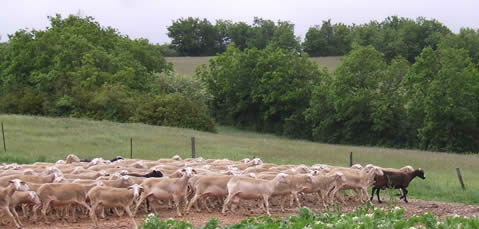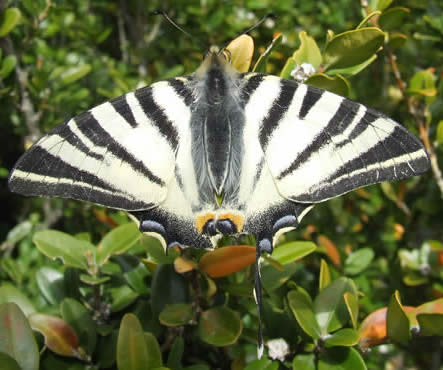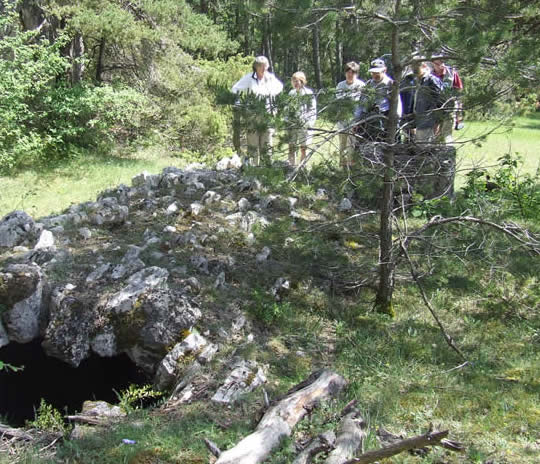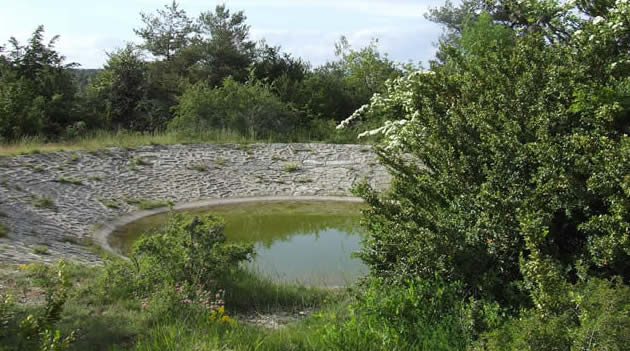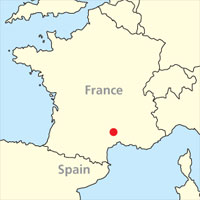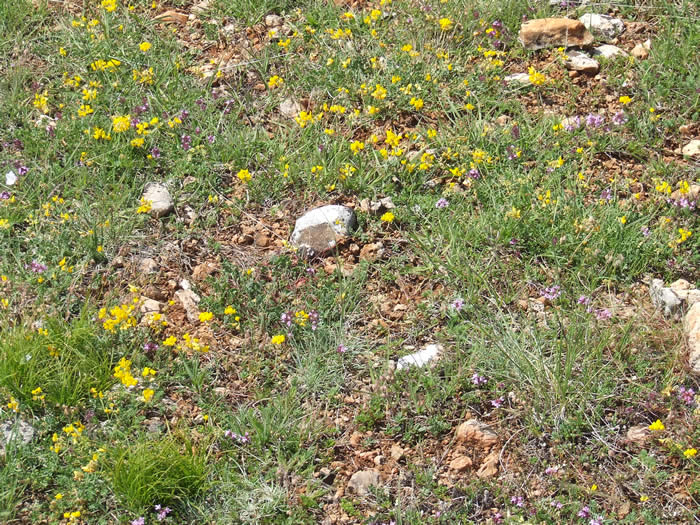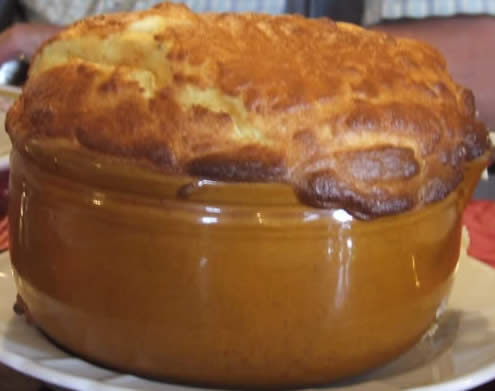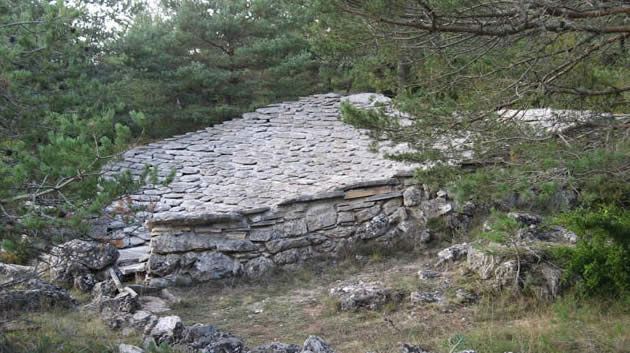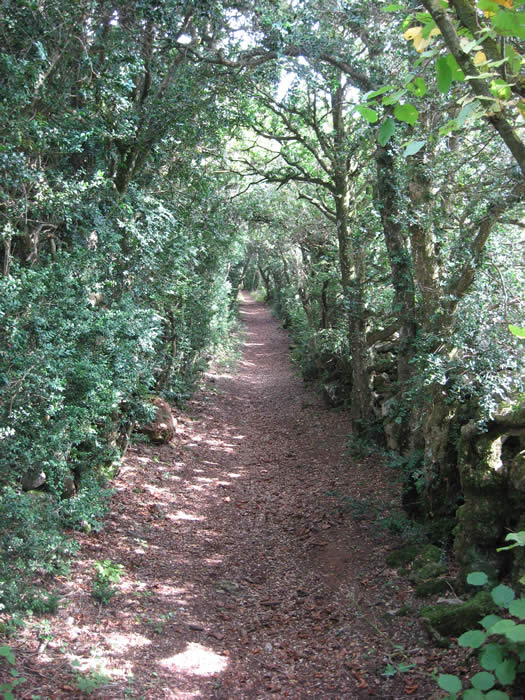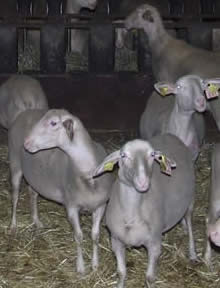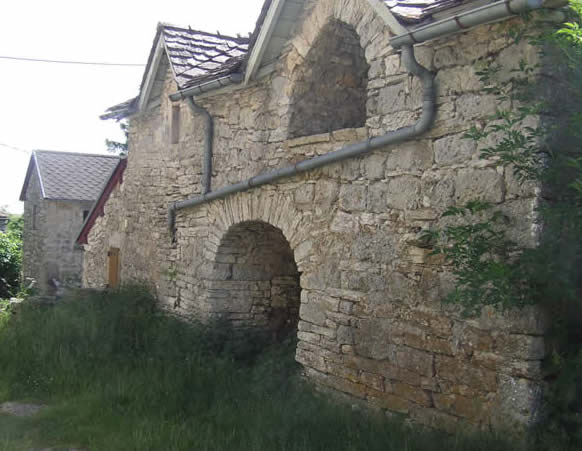Brebis, milk-producing sheep of the Causse
Our nature notes feature, for the first time, livestock. Rachel and Robin Hamilton look at how brebis (French for ewe) shape the landscape, wildlife and cuisine of the Cévennes.
The ancient landscapes of the Causses and the Cévennes are spectacular, with a richness of wildlife to match; and they are deeply entwined with their cultural history. There is a rich harvest of honey, timber and nuts from the sweet chestnut forests that clothe the schist and granite hills of the Cévennes and the deep valley soils have been cultivated for generations.
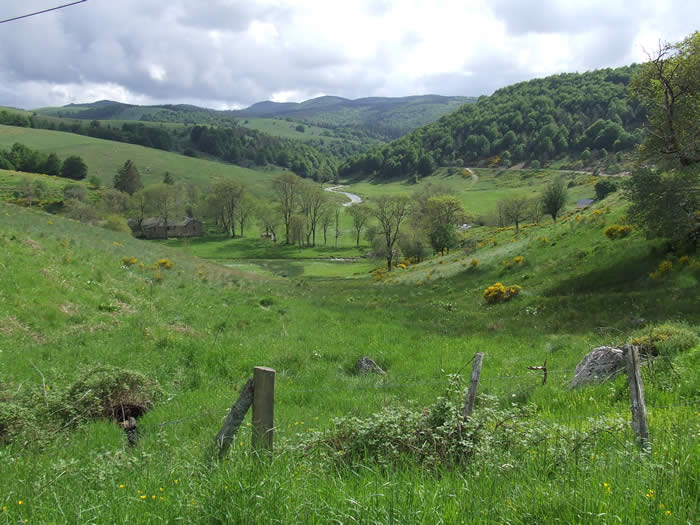
Cévennes landscape
But it is to the brebis, the characteristic, small creamy-brown sheep whose presence has been fundamental to the Caussenard agriculture for many centuries that we owe the extraordinary richness and diversity of the causse flora and the beauty of the grazed grassland.
Not only does their grazing prevent the short flower-rich turf from being overwhelmed by invading scrub, but it also maintains the low soil nutrient levels on which the more interesting flowers depend.
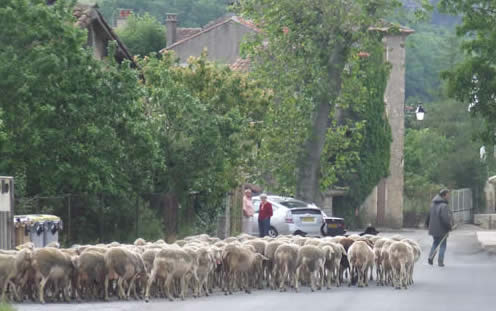
Bebis going to be milked at St Eulalie de Cernon
The sheep remain a very significant element of the local economy; they are milked for what many consider to be the finest cheese in the world – Roquefort – as well as for delicious creamy yoghurt.
The diverse flora provides rich habitat for other wildlife. Butterflies and bright jewel-coloured moths, bugs and beetles, noisy crickets and grasshoppers, even tarantulas, all depend on the close-grazed rocky grassland. Lizards scuttle among the rocks and it all provides productive feeding for short-toed eagles, harriers, shrikes and wheatears. |
Scarce swallowtail on box, |
The local limestone is very permeable and in the hot southern summers, water for livestock is in short supply. Dramatic water-holding structures can be found, with a range of methods of catching water: the underground, stream-fed cistern or the complex and beautiful toit-citerne, for example. Here and there, beautiful stone dewponds, or lavognes are constructed to catch and retain water.
Vaulted cistern |
A brebis flock will be taken to visit a lavogne morning and evening, before going out to graze during the day and returning to a home field or barn at night. |
The tops are very exposed. Winter is harsh and the summer sun can be relentless. The pastoral communities planted buissières (right) – long tunnels of box bushes – between neighbouring hamlets to protect travellers and livestock from the winter snow and summer sun.
Limestone is plentiful and available. Surface rock is better out of the way and is put to excellent use in houses, stone-wall enclosures and sheepfolds. Sturdily built barns are still often used for livestock housing in the winter.
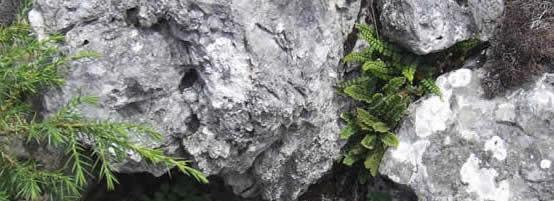
Limestone wall with rustyback fern
________________________
For many years, a railway transported people and produce across the Causse. Chestnuts were an important export from the slopes of the Cévennes and stakes cut from the chestnut woods were transported to the vineyards of the lower Tarn Valley. Sheep bedding was carried up and returned with manure afterwards, to fertilise the arable fields and vineyards; wine was an important eastbound cargo. The line itself is long defunct but several abandoned railway buildings remain along the old track.
Above Nant, up on the Causse du Larzac, is the Gare aux Ânes, the ‘donkey station’, the base for our Honeyguide Holiday has been rescued and imaginatively restored. We were originally under the impression that the railway transported brebis sheep, milk and cheese. In reality, chestnut wood and wine were the main local products being moved in its heyday in the early years of the 20th century, perhaps equally romantic!

La Gare aux Ânes
Back to nature notes Rachel and Robin Hamilton, January 2010


